Ambreen Nazir
DTCA: Decision Tree-based Co-Attention Networks for Explainable Claim Verification
Apr 28, 2020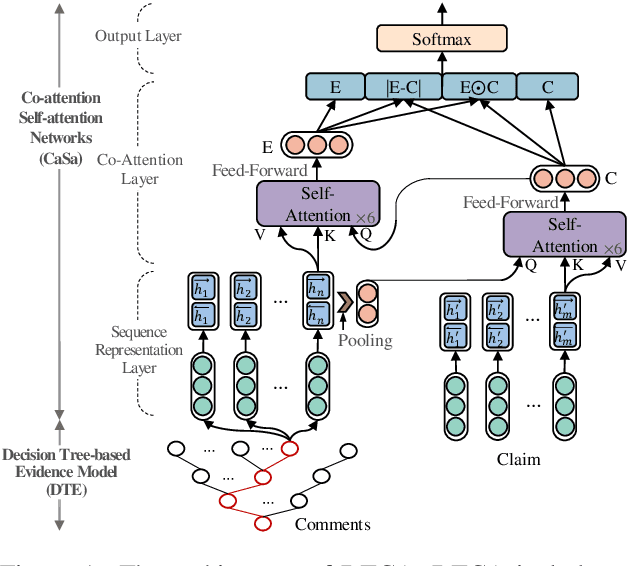
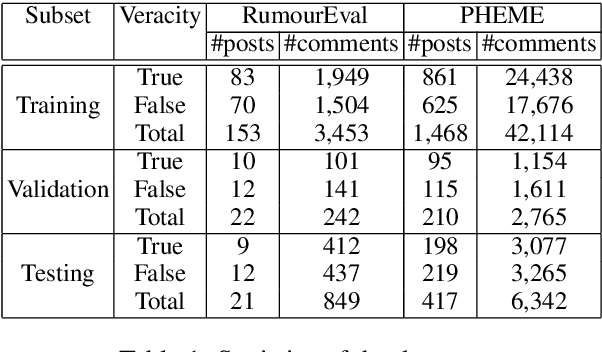
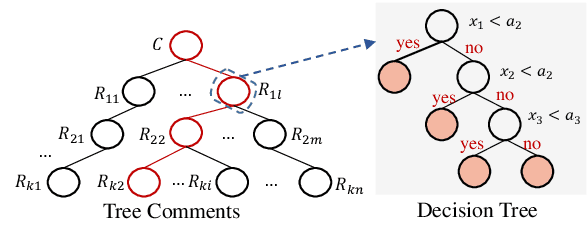

Abstract:Recently, many methods discover effective evidence from reliable sources by appropriate neural networks for explainable claim verification, which has been widely recognized. However, in these methods, the discovery process of evidence is nontransparent and unexplained. Simultaneously, the discovered evidence only roughly aims at the interpretability of the whole sequence of claims but insufficient to focus on the false parts of claims. In this paper, we propose a Decision Tree-based Co-Attention model (DTCA) to discover evidence for explainable claim verification. Specifically, we first construct Decision Tree-based Evidence model (DTE) to select comments with high credibility as evidence in a transparent and interpretable way. Then we design Co-attention Self-attention networks (CaSa) to make the selected evidence interact with claims, which is for 1) training DTE to determine the optimal decision thresholds and obtain more powerful evidence; and 2) utilizing the evidence to find the false parts in the claim. Experiments on two public datasets, RumourEval and PHEME, demonstrate that DTCA not only provides explanations for the results of claim verification but also achieves the state-of-the-art performance, boosting the F1-score by 3.11%, 2.41%, respectively.
Discovering Differential Features: Adversarial Learning for Information Credibility Evaluation
Sep 16, 2019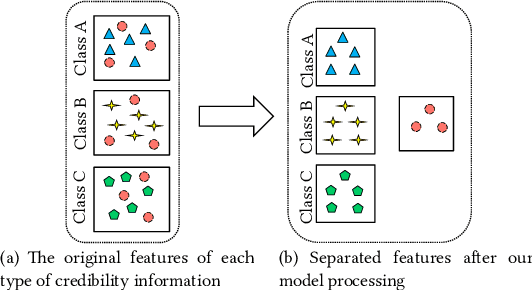
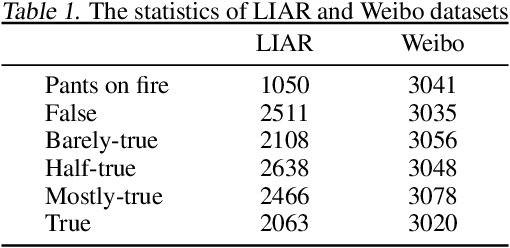
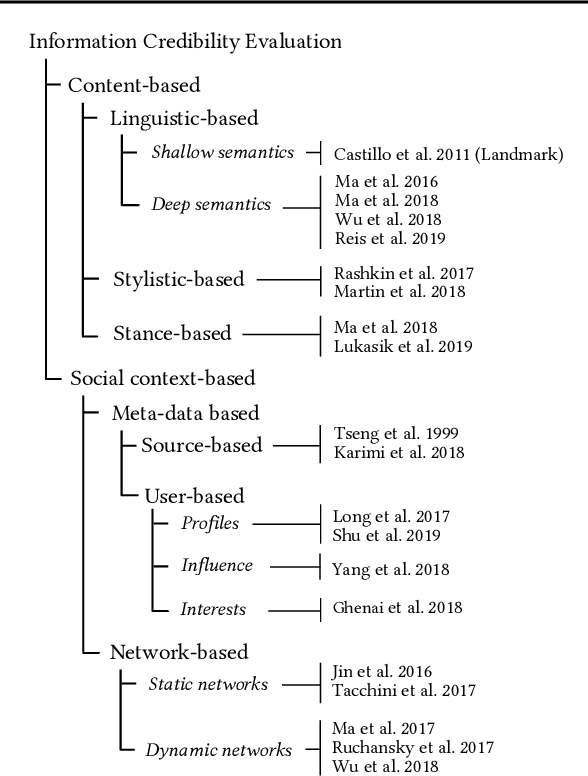
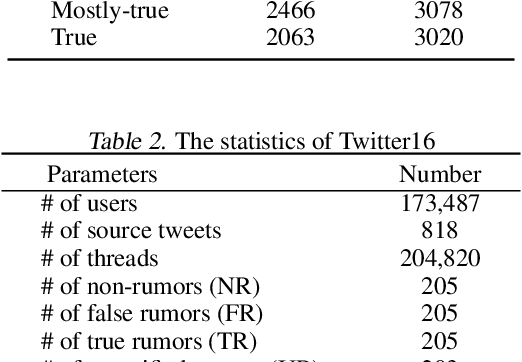
Abstract:A series of deep learning approaches extract a large number of credibility features to detect fake news on the Internet. However, these extracted features still suffer from many irrelevant and noisy features that restrict severely the performance of the approaches. In this paper, we propose a novel model based on Adversarial Networks and inspirited by the Shared-Private model (ANSP), which aims at reducing common, irrelevant features from the extracted features for information credibility evaluation. Specifically, ANSP involves two tasks: one is to prevent the binary classification of true and false information for capturing common features relying on adversarial networks guided by reinforcement learning. Another extracts credibility features (henceforth, private features) from multiple types of credibility information and compares with the common features through two strategies, i.e., orthogonality constraints and KL-divergence for making the private features more differential. Experiments first on two six-label LIAR and Weibo datasets demonstrate that ANSP achieves the state-of-the-art performance, boosting the accuracy by 2.1%, 3.1%, respectively and then on four-label Twitter16 validate the robustness of the model with 1.8% performance improvements.
Different Absorption from the Same Sharing: Sifted Multi-task Learning for Fake News Detection
Sep 04, 2019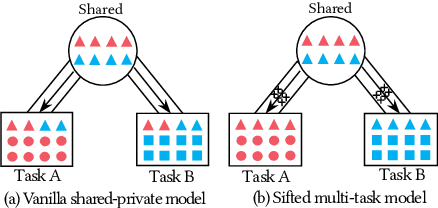
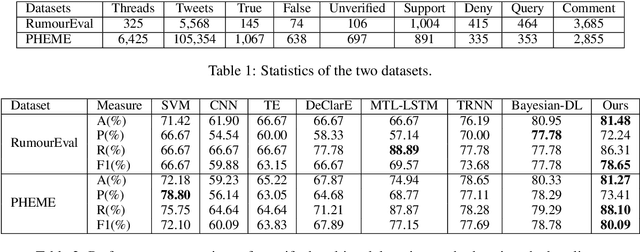
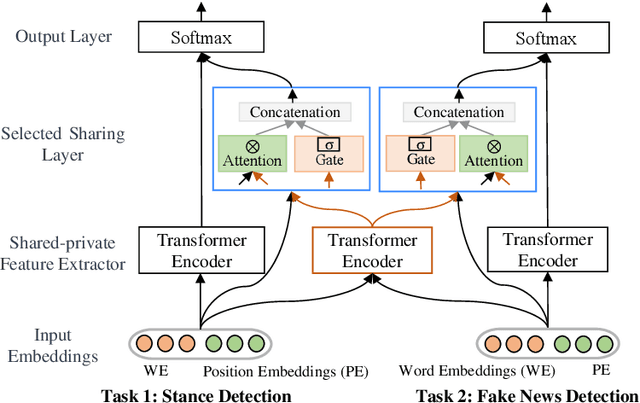
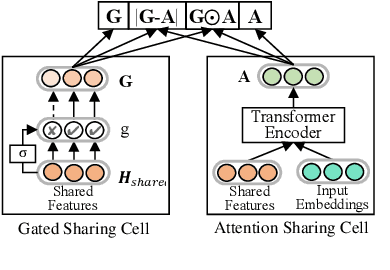
Abstract:Recently, neural networks based on multi-task learning have achieved promising performance on fake news detection, which focus on learning shared features among tasks as complementary features to serve different tasks. However, in most of the existing approaches, the shared features are completely assigned to different tasks without selection, which may lead to some useless and even adverse features integrated into specific tasks. In this paper, we design a sifted multi-task learning method with a selected sharing layer for fake news detection. The selected sharing layer adopts gate mechanism and attention mechanism to filter and select shared feature flows between tasks. Experiments on two public and widely used competition datasets, i.e. RumourEval and PHEME, demonstrate that our proposed method achieves the state-of-the-art performance and boosts the F1-score by more than 0.87%, 1.31%, respectively.
 Add to Chrome
Add to Chrome Add to Firefox
Add to Firefox Add to Edge
Add to Edge